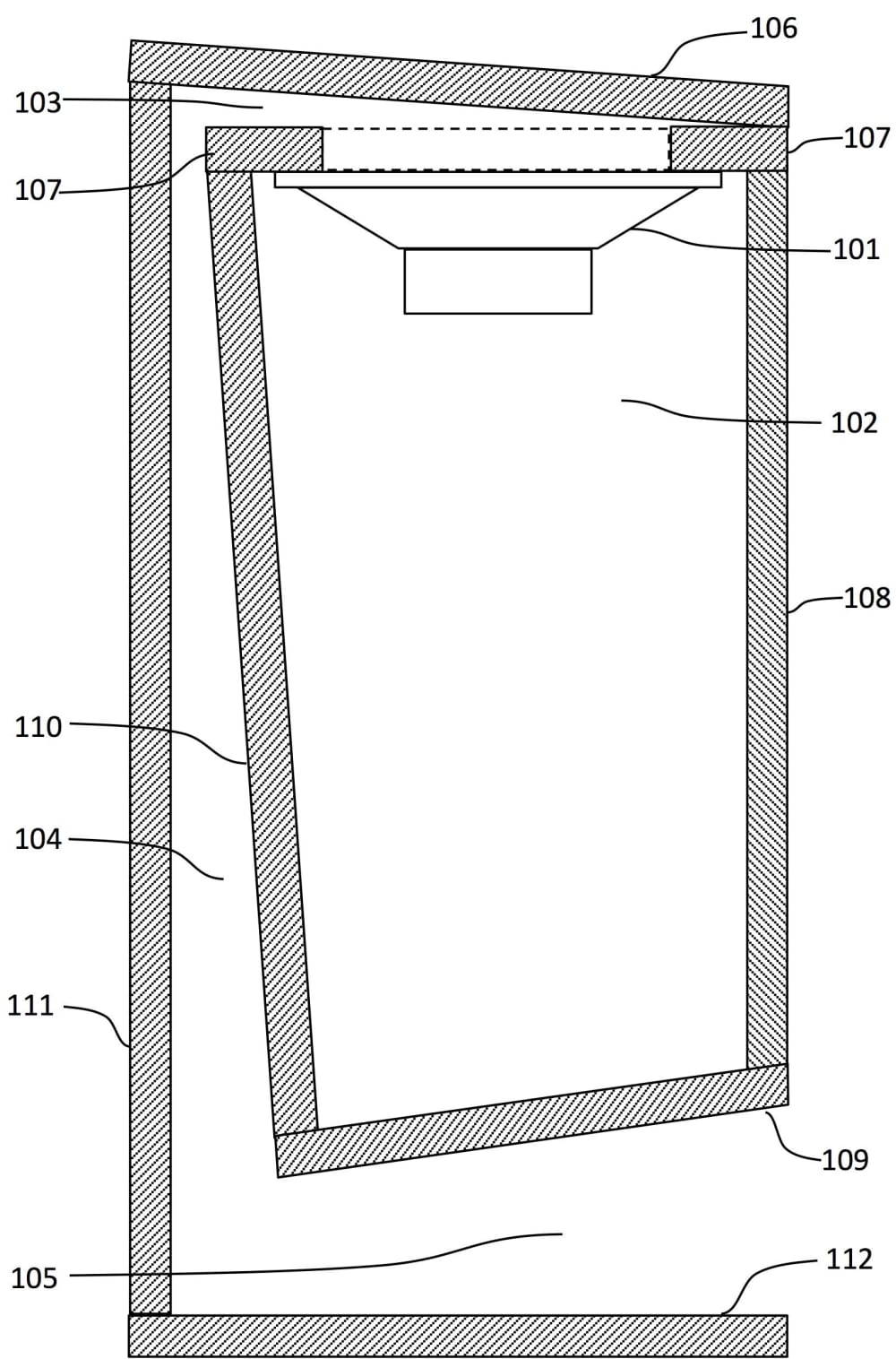
The invention disclosed here is perhaps the most significant innovation in loudspeaker design since the invention of the acoustic suspension speaker in 1954.
Getting good clean bass from a reasonably sized speaker enclosure is not easy. Subwoofers can put out plenty of bass from fairly small boxes by using tuned ports to extend their low-frequency range, but they typically sound “muddy” or “boomy” due to excessive distortion. Acoustic suspension speakers typically have much less distortion and thus sound much cleaner but they may be less efficient and have to be physically large to produce the low frequencies.
In designing an acoustic suspension speaker enclosure, it is well known that the speed of sound in air is the limiting factor, requiring a proportionally larger box to produce the lower frequencies of deep bass. Thus, extending the bass range by one octave, say from 60Hz to 30Hz, would require doubling the size of the enclosure.
The present invention (Patent No. 10,631,086) gets around this limitation by replacing the air inside the enclosure with a safe non-toxic heavy gas in which the speed of sound is much slower. For example, if we take an enclosure that would normally be good down to 60Hz and fill it with a heavy gas in which the speed of sound is three times slower than that of air, that same enclosure would be good down to 20Hz. Such heavy gasses are readily available.
The invention includes numerous other features to optimize performance. It places the main speaker (woofer) at the top of the enclosure so the weight of the heavy gas will not force the cone out of its neutral position. The panels that make up the enclosure are angled such that none of them are parallel or perpendicular to each other, thus reducing the buildup of standing waves. The woofer output is coupled into a three-section folded horn that wraps around the top, rear, and bottom of the sealed enclosure to more efficiently couple the acoustic energy into the surrounding air. Midrange drivers and tweeters can be mounted next to the woofer or, above the woofer facing down into the same horn to provide a full range speaker system.
While acoustic suspension speaker systems are often referred to as “sealed enclosures” because they do not have open vents or ports, they are deliberately made somewhat “leaky” to allow them to compensate for changes in atmospheric pressure and internal temperature. However, in the present invention, we do not want the heavy gas to leak out or air to leak in, so an alternate means of pressure compensation is needed. This is accomplished by having one or more flexible bladders built into the cabinet but with their outer surface vented to the outside air and their internal volume connected to the sealed enclosure so the heavy gas can slowly seep in and out of the bladder to equalize any pressure difference.
-
Awards
-
 2020 Top 100 Entries
2020 Top 100 Entries
Like this entry?
-
About the Entrant
- Name:Chuck Bagg
- Type of entry:individual
- Software used for this entry:PowerPoint
- Patent status:patented

